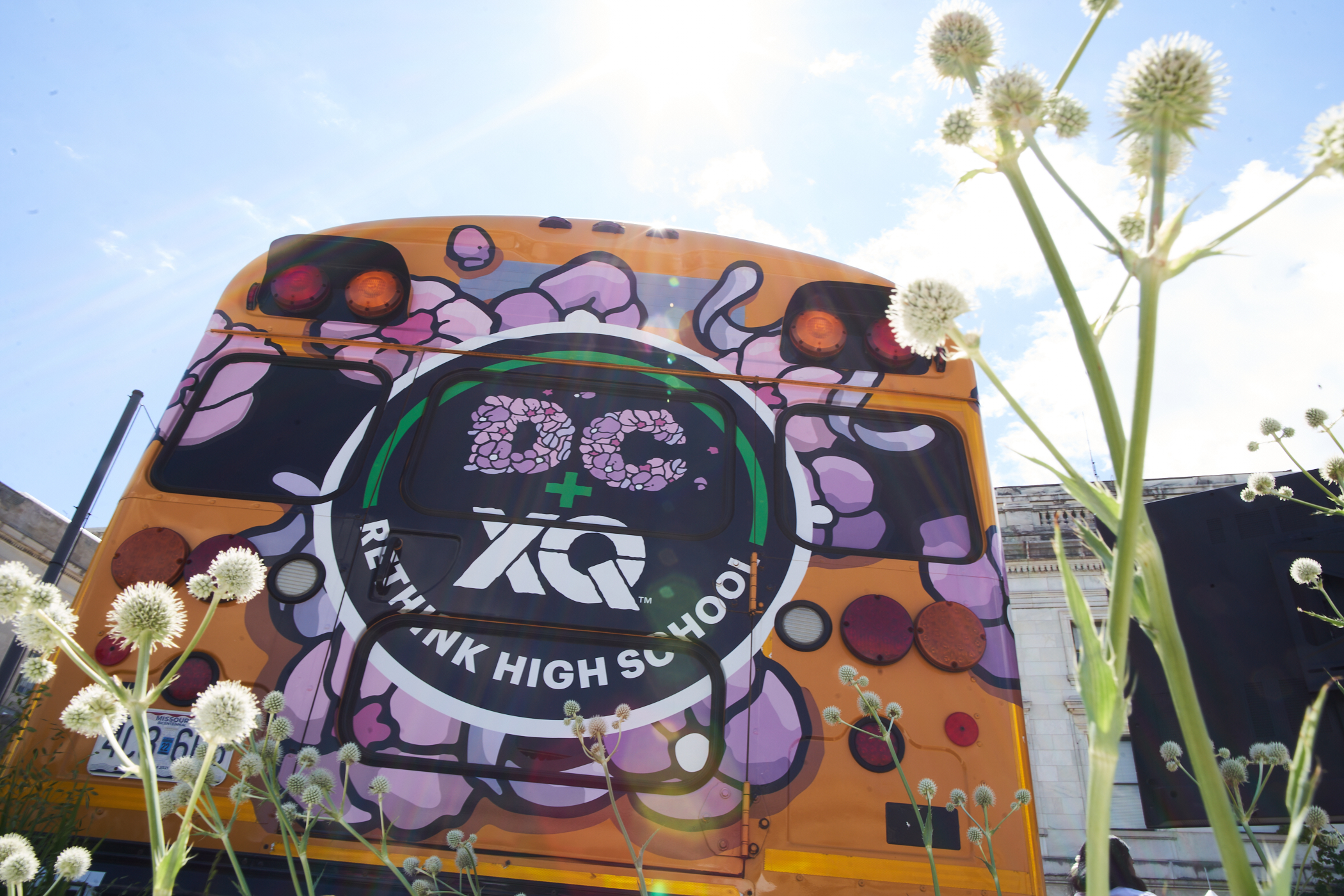In A Contemporary, Media-Driven World, These Two Schools Are Rethinking Education
These two southern California schools are taking two different approaches to connect their students to the community to prepare them for the future. Here's how they do it.

The world is changing. That means jobs are changing. And with that, schools — and students — will need to change, too.
Contemporary high school graduates need to be both media-savvy and collaborative, capable of establishing professional relationships throughout their lives in order to thrive in a digital marketplace. This will require schools to rethink their core competencies while still addressing the value of “soft” skills such as time management, communication, and collaboration.

Preparing for the Modern World
“The economy right now favors the weird; favors the new; favors the out-of-the-box thinkers,” says Daniel Allen, executive director of school renewal with the Santa Ana Unified School District.
And two very different Southern California schools — Círculos in Santa Ana and Vista High School near San Diego — are exploring solutions that could help students become more prepared for a modern world.
Circulos: A High School Without Walls
Circulos is a “high school without walls” — that is, without a dedicated brick-and-mortar campus — and it is set to launch next fall. Rather than occupying a fixed location, learning will happen in co-working spaces, mobile labs, and the offices of partner organizations. Collaborative projects will be aimed at embedding students within organizations, industries, and businesses where they can learn alongside adults doing that work.
Currently being piloted as three schools-within-schools in Santa Ana, its philosophy re-examines what students require to thrive after graduation. Circulos pushes them to aim beyond core learning material to develop into curious, capable individuals who are well-equipped for contemporary issues.
By marrying rigorous interdisciplinary academics with personalized project-based learning, the curriculum is tailored to students’ interests and needs.
For example, students in a Círculos’ pilot program in spring 2018 will study a naturalist curriculum at the Heritage Museum of Orange County. It will be a tailored version of the museum’s existing Volunteer Naturalist Program that will help students explore the history, wildlife, and Native American cultural history of one of Santa Ana’s last remaining freshwater wetlands two days a week.
Vista High: Creating Closer-Knit Student Communities
The other school, Vista High, is a 2,700-student “traditional” comprehensive school where learning is centered on personalized curriculum with a focus on media and global literacy. Beginning with a pilot Personal Learning Academy in 2015, its new approach is being implemented across Vista’s entire freshman class with a plan to expand to all students by 2020.
“Rather than being spoken at or lectured at … [students] really start gaining a better insight into how they can engage and control their own learning process,” says Craig Gastauer, internal director of XQ at Vista High School.
Intrinsic to this school’s transformation will be initiatives to make its substantial student body feel more personal to each individual learner while creating stronger relationships between students and teachers. To accomplish this, their students are organized into “houses” with 130 students each based on their elective choices as a way to create closer-knit student communities. Rather than teachers making all decisions, students are encouraged to co-create learning experiences such as interdisciplinary group projects.
”[Personalized learning is] really about helping the student to increasingly take ownership of their learning process,” Gastauer says.
“A teacher will still set up the big goals for the class, but [also] help provide areas where the students can be invited to … help to identify, potentially, goals that they might set within a unit,” he explains.
The Importance of Digital, Media, and Global Literacy
Alongside traditional academic subjects, both schools stress the importance of digital, media, and global literacy — competency in absorbing, discussing, and communicating ideas and understanding through digital devices. For example, Vista High’s XQ students learn about media bias and how to evaluate and filter the digital messages they’re bombarded with.
Vista High’s XQ teachers also encourage digital and global literacy by looking at contemporary social issues and challenges, like those outlined in the United Nations Sustainable Development Goals established in 2015 to end poverty, protect the planet, and ensure prosperity for all.
“U.N. sustainability goals are directly relatable to their own lives,” Gastauer explained. “When we talk about poverty and education to get out of poverty, that’s really something they can connect to.”
Students will explore topics such as hunger, health, poverty, education, clean water, and climate action on broader levels each year, working across school disciplines.
Such study may not only better engage students, but also directly addresses — and can truly make a difference in — pressing issues affecting their own day-to-day lives.
Building Real-World Relationships
Enabling students to build real-world relationships, community collaborations, and hands-on projects is crucial to breaking down wealth disparity in cities like Santa Ana and Vista. Surrounded by generally affluent Southern California, each has poverty rates of around 20%. To address this, a student with ambitions to become a lawyer, for example, might be offered the opportunity to work on projects at local law firms. There, they could learn the language and expectations of that environment and see pathways to their goals.
“We know that kids need access to strong academic programs,” Allen says. “But we feel like it’s just as important that students are gaining social capital, that they’re building relationships and networking with … people who can help them navigate the opportunities in the real world.”
By demonstrating the flexibility and scalability of their learning models, schools like Circulos and Vista High could eventually help educators across America to reevaluate the 21st-century educational experience and the graduates it produces. And that’s good news not just for grads but for everyone.









